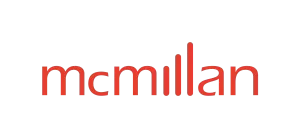- within Transport and Tax topic(s)
- with Senior Company Executives, HR and Finance and Tax Executives
- with readers working within the Accounting & Consultancy, Banking & Credit and Insurance industries
Under the Canadian Fighting Against Forced Labour and Child Labour in Supply Chains Act (the "Act"), certain businesses and government bodies are obligated to report their efforts to prevent and mitigate the risk of the use of forced labour or child labour in their supply chains.1 The Act seeks to combat these practices by requiring certain organizations to disclose in an annual report, their policies, due diligence processes, and actions taken to identify and address forced labour and child labour risks in their operations and supply chains. For Canadian reporting entities, the next reporting deadline is May 31, 2026.
Although the Act was enacted in 2023, other jurisdictions, such as Australia2 and the United Kingdom (the "UK"),3 have enacted similar legislation in 2018 and 2015, respectively. It is therefore essential for organizations to review the governing legislation in each jurisdiction, as distinct legal requirements apply.
To help streamline reporting across multiple jurisdictions, in July 2025, the Government of Canada, the Government of the UK, and the Government of Australia released a multi-jurisdictional reporting template (the "Template"). The Template is designed to reduce the administrative burden for organizations that are subject to the supply chain transparency requirements in all applicable jurisdictions. Organizations operating internationally across these jurisdictions may be subject to the reporting requirements in each jurisdiction and may consider the Template as a guide to implement best practices for supply chain reporting. Public Safety Canada issued additional guidance accompanying this template.4
The Template encourages proportionate risk-based reporting where higher-risk organizations should provide a higher level of detail in their submissions than lower-risk organizations. Although the Template does not define "high-risk" or "low-risk" organizations, it clarifies that risk is assessed in relation to potential harm to people, rather than to the organization itself (such as reputational or financial harm).5 Organizations are responsible for conducting their own risk assessments and must describe the areas of their business and supply chains that pose a risk of forced or child labour, as well as the measures taken to assess and manage those risks.6
7 Overarching Reporting Requirements
The Template uses 7 themed categories to group the various reporting requirements of the jurisdictions. Each report should cover the organization's previous financial year and include information responding to all the requirements listed below.
- A description of the organization's structure, operations, activities and supply chains, including consultation with any linked organizations covered by this statement;
- A description of the organization's policies in relation to modern slavery, forced labour and child labour;
- A description of any risk management processes in place to assess and address the risk of modern slavery, forced labour and child labour practices in the reporting organization's supply chains;
- A description of the organization's due diligence process in relation to, and any measures taken to remediate any instances of, modern slavery, forced labour and child labour in its supply chains;
- A description of the training provided to employees on modern slavery, forced labour and child labour;
- A description of how the organization assesses the effectiveness of the actions it has taken to prevent and respond to modern slavery, forced labour and child labour, and its due diligence processes; and
- Any other information the organization considers relevant to the spirit and intent of the legislation.
Expectation to Continuously Improve Reporting Compliance
Each jurisdiction expects organizations to improve their submission quality and demonstrate progress year-on-year. To promote continuous improvement, the Template provides two levels of quality measurement applicable to each of the seven categories above.
- Level 1: includes information that organizations should disclose under each jurisdiction's transparency legislation. Level 1 may exceed the minimum requirements in one or more jurisdiction.
- Level 2 (recommended): includes information in addition to Level 1 disclosures to demonstrate progress and leadership in supply chain transparency.
Broadly, the levels of disclosure are distinguished across the following overarching themes:
| Theme | Level 1 Disclosures | Level 2 Disclosures (In Addition to Level 1 Disclosures) |
| Organization Structure, Operations, Activities, and Supply Chains |
|
|
| Policies |
|
|
| Risk Management |
|
|
| Due Diligence & Remediation |
|
|
| Training |
|
|
| Monitoring & Evaluation |
|
|
| Other Information |
|
|
Caution to Organizations
Organizations should consult the governing legislation and government specific guidance for each jurisdiction to confirm their reporting obligations. Each jurisdiction has differences in the legislative requirements, definitions, and scope.7
Public Safety Canada's guidance identifies some of the differences. For example, the Australian and UK legislation use the term "modern slavery," which is defined differently in each jurisdiction. Under the Australian legislation, the term "modern slavery" captures the following practices: human trafficking, slavery, servitude, forced labour, forced marriage, debt bondage, the worst forms of child labour, and deceptive recruiting for labour or services. And under the UK legislation, the term "modern slavery" covers slavery, servitude, forced or compulsory labour, and human trafficking.
The Act does not use the term "modern slavery". The Canadian legislation uses and defines the terms "forced labour" and "child labour." 8
"Child labour" is defined as labour or services provided or offered to be provided by persons under the age of 18 years and that:
- are provided or offered to be provided in Canada under circumstances that are contrary to the laws applicable in Canada;
- are provided or offered to be provided under circumstances that are mentally, physically, socially or morally dangerous to them;
- interfere with their schooling by depriving them of the opportunity to attend school, obliging them to leave school prematurely or requiring them to attempt to combine school attendance with excessively long and heavy work; or
- constitute the worst forms of child labour as defined in article 3 of the International Labour Organization (the "ILO") Worst Forms of Child Labour Convention, 1999.
"Forced labour" is defined as labour or service provided or offered to be provided by a person under circumstances that:
- could reasonably be expected to cause the person to believe their safety or the safety of a person known to them would be threatened if they failed to provide or offer to provide the labour or service; or
- constitute forced or compulsory labour as defined in article 2 of the ILO Forced Labour Convention, 1930.
There are also differences and ambiguities in administrative reporting requirements between each jurisdiction (e.g., publication of the report on the organization's website). Organizations are cautioned to carefully review the compliance requirements found in the Template and to periodically ensure the template they are using is up to date. Updates to the Template may be made and published on an ad-hoc basis.
McMillan's team continues to offer support for businesses and government entities both in determining their reporting obligations, and in preparing and revising reports. For more information, please contact the authors or any member of our International Trade group.9
1 Fighting Against Forced Labour and Child Labour in Supply Chains Act S.C. 2023, c. 9 at s 11(1).
2 Modern Slavery Act 2018 (Cth).
4 Public Safety Canada, "International Reporting on Modern Slavery, Forced Labour and Child Labour" (July 2025) online: Government of Canada, International Reporting on Modern Slavery, Forced Labour and Child Labour.
5 Public Safety Canada, "International Reporting on Modern Slavery, Forced Labour and Child Labour" (July 2025) online: Government of Canada, International Reporting on Modern Slavery, Forced Labour and Child Labour at Template p. 4.
6 Fighting Against Forced Labour and Child Labour in Supply Chains Act S.C. 2023, c. 9 at s 11(3).
7 Public Safety Canada, "International Reporting on Modern Slavery, Forced Labour and Child Labour" (July 2025) online: Government of Canada International Reporting on Modern Slavery, Forced Labour and Child Labour at Template p 2.
8 Fighting Against Forced Labour and Child Labour in Supply Chains Act S.C. 2023, c. 9 at s. 2.
9 For more details, see our previous bulletin on the Act and on Public Safety Canada's guidance.
The foregoing provides only an overview and does not constitute legal advice. Readers are cautioned against making any decisions based on this material alone. Rather, specific legal advice should be obtained.
© McMillan LLP 2025




